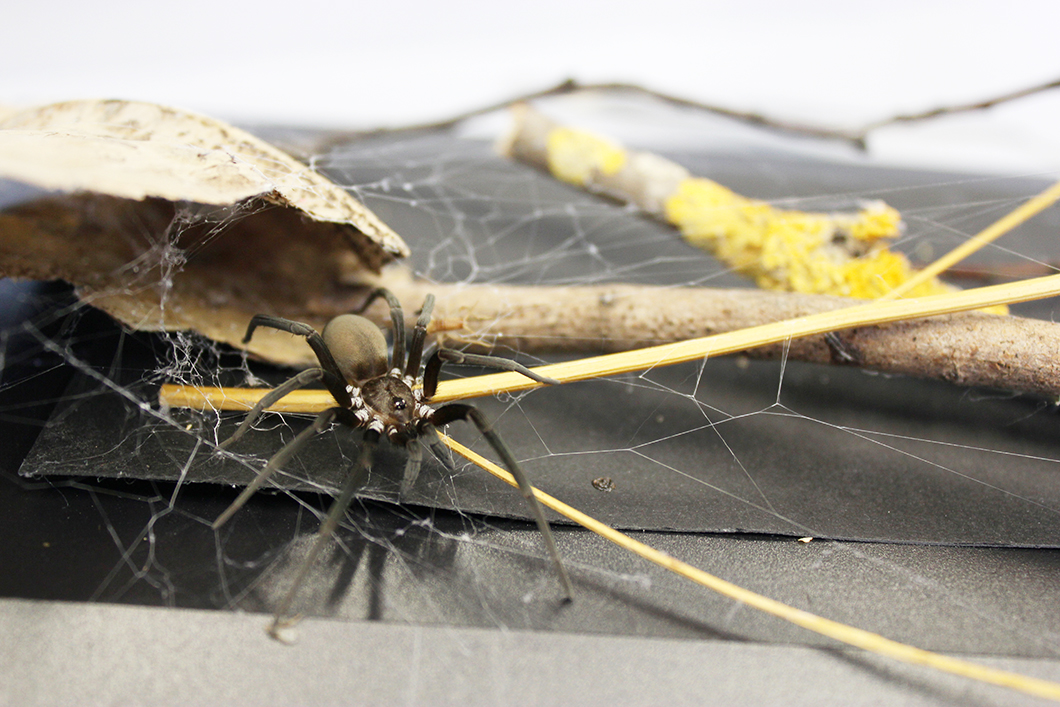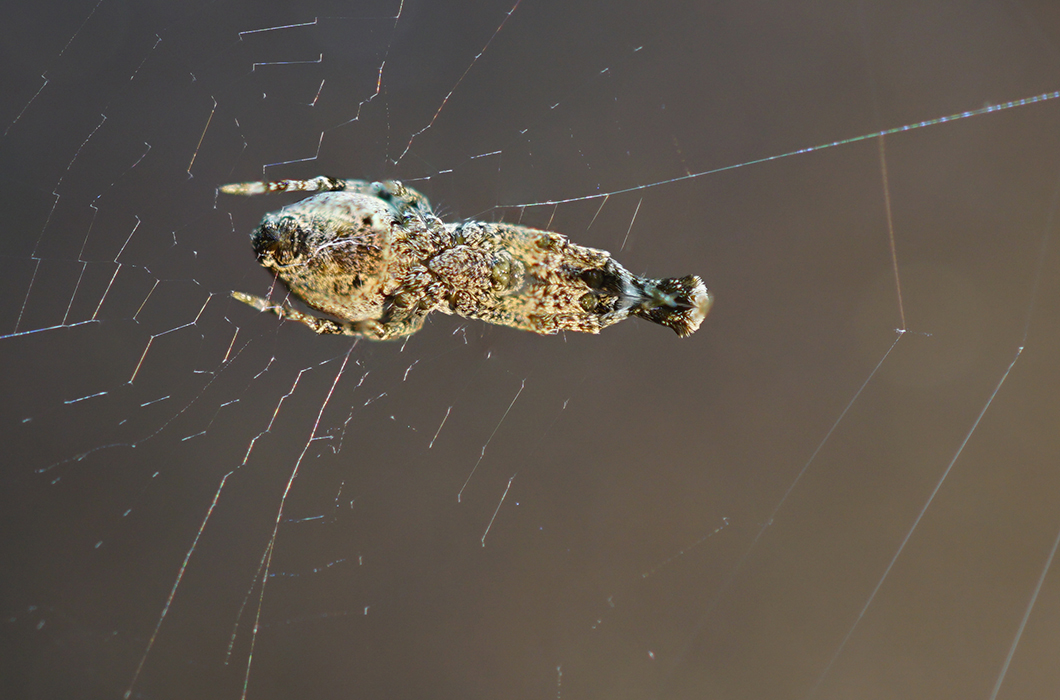
Kukulcania hibernalis
Source: Anna-Christin Joel, RWTH Aachen
Project period
01/10/2019 - 30/09/2022
Project type
EU project
Project status
Closed
Description
BioCombs4NanoFibers: Scientists from various disciplines take cribellate spiders as models in order to face technical challenges in nanotechnology. The scientists want to mimick the nanostructures of the calamistrum (a part of some legs of the animals), which enable the spiders to handle sticky nanofibers, and transfer the mechanisms to technical surfaces.
Location
Bundesanstalt für Materialforschung und -prüfung (BAM)
Branch Fabeckstraße
Unter den Eichen 44-46
12203 Berlin
Uloborus plumipes Source: Anna-Christin Joel, RWTH Aachen
Nanofibers are constantly drawing the attention of material scientists and engineers as their surface-to-used-material-ratio is beneficial for, e.g., medical applications. However, technical nanofiber processing, transportation or even simple things as spooling is inhibited by their attraction to any surface by van der Waals forces, the adhesive forces also enabling geckos to stick to the wall. Recent research aims for scale-up of the controllable production of nanofibers.
Source: BAM
Inspiration by nature: One major problem for handling of nanofibers is their stickiness to almost any surface due to van der Waals forces. However, there is a biological example to show how to tackle this problem in the future: cribellate spiders bear a specialized comb, the calamistrum, to handle and process nanofibers. These 10 – 30 nm thick fibers do not stick to the calamistrum due to a special fingerprint-like nanostructure. The project aims to transfer these structures and mechanisms to technical surfaces.
Source: BAM
- Femtosecond laser material processing of nano- and microstructures on technical surfaces
- Investigation of surface interaction with nanofibers and different microorganisms
Source: BAM
JKU - Johannes Kepler Universität Linz, Austria (Coordinator)
RWTH - Rheinisch-Westfälische Technische Hochschule Aachen, Germany
FORTH – Foundation of Research and Technology Hellas, Crete, Greece
BAM – Bundesanstalt für Materialforschung und -prüfung, Berlin, Germany
INFLPR - National Institute for Laser, Plasma and Radiation Physics, Bucharest, Romania,
ELMARCO – Elmarco SRO
BioCombs4Nanofibers -Antiadhesive Bionic Combs for Handling of Nanofibers
Nanofibers have an excellent surface-to-used-material-ratio which is beneficial for many applications. However, technical nanofiber processing, transportation or even spooling is inhibited by their attraction to any surface. There is a biological example to show how to tackle this problem: cribellate spiders bear a specialized comb to handle and process nanofibers, which does not stick due to a special fingerprint-like nanostructure. The transfer of these bionic comb structures to technical surfaces will enable future tools for nanofiber handling. Similar nanostructures can hinder the adhesion of nanofibrous protrusions of cells or microorganisms, which may enable cell-repellent or antiseptic areas on medical devices and implants.
The transfer of bionic comb structures to a technical surface will enable that future tools for nanofiber handling (covered with such a nanostructure) are antiadhesive towards nanofibers. Similar nanostructures can hinder the adhesion of nanofibrous protrusions of cells or microorganisms, which may enable cell-repellent or antiseptic areas on medical devices and implants.
Technical work packages
The BioCombs4Nanofibers project consist of three technical work packages (WP), one dissemination-exploitation-communication work package, and one work package for management and coordination.
WP1 Project Management
Lead: JKU Johannes Kepler Universität Linz
WP2 Fundamental Research
Lead: RWTH Rheinisch-Westfälische Technische Hochschule
WP3 Applied Research
Lead: INFLPR National Institute for Laser, Plasma and Radiation Physics
WP4 New Technology Concepts
Lead: FORTH Foundation of Research and Technology Hellas
WP5 Dissemination-Exploitation-Communication
Lead: Bundesanstalt für Materialforschung und -prüfung
BAM's contribution
Within the project, BAM is investigating the processing of different laser-induced structures on technical materials, both experimentally and theoretically. The laser-processed surfaces are characterized with a particular focus on adhesion of nanofibers and microbial response. BAM is the leading beneficiary of WP5 Dissemination-Exploitation-Communication.
Project partners
JKU - Johannes Kepler Universität Linz, Austria
RWTH - Rheinisch-Westfälische Technische Hochschule Aachen, Germany
FORTH – Foundation of Research and Technology Hellas, Crete, Greece
BAM – Bundesanstalt für Materialforschung und -prüfung, Berlin, Germany
INFLPR - National Institute for Laser, Plasma and Radiation Physics, Bucharest, Romania
ELMARCO – Elmarco SRO
Funding
The project receives funding from the European Research and Innovation action (RIA) via the Horizon2020 FETOPEN Programme (Call H2020-FETOPEN-2018-2019-2020-01), Grant agreement ID: 862016

Source: The European Union's Horizon 2020 research and innovation programme


